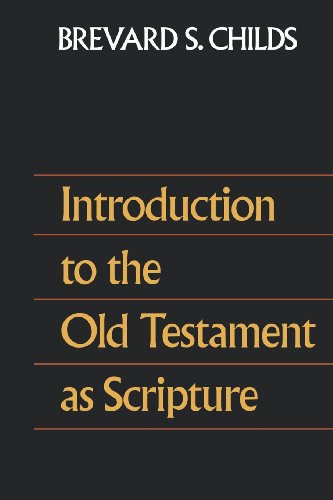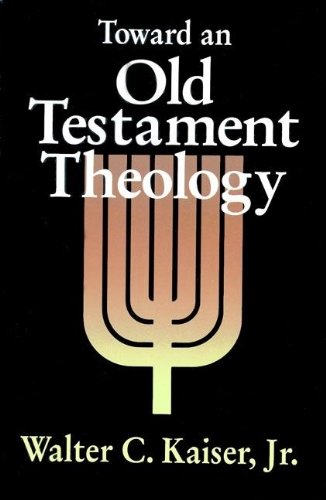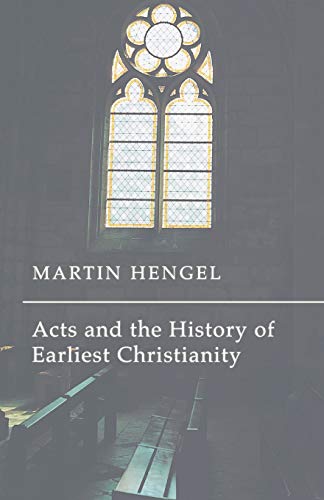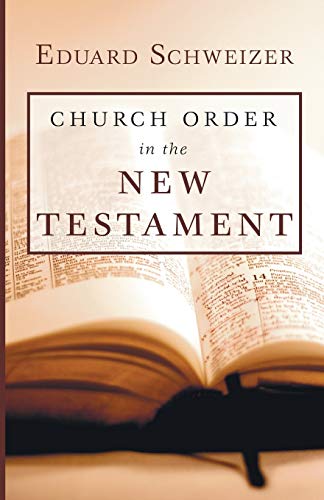Introduction to the Old Testament as Scripture
Written by Brevard S. Childs Reviewed By Robert L. Hubbard, JrThere is no scholarly task more formidable than that of writing an introductory text. Such an endeavour requires the mastery of the almost endless secondary literature, familiarity with countless technical arguments on specific points, and conversance with disciplines outside one’s specialty but which are pertinent at many points. It is no small accomplishment that Brevard Childs, distinguished Old Testament scholar at Yale University, offers his contribution to Old Testament introduction with evident mastery of the field.
This is without doubt a provocative and exciting book. It rises like a towering landmark on the contemporary scene of Old Testament studies and is destined to cast its shadow over generations of future scholars. Its combination of awesome erudition and pleasant readability will gain it entrance into everyone’s footnotes. Those who have in the past laboriously worked their way through the likes of Eissfeldt’s endless piles of text layers and redactions will find this book to be sheer pleasure by comparison.
The format of the book merits mention. It is layed out in six parts: an introductory section in which Childs delineates his unique approach to the subject is followed by sections treating the Pentateuch, Former Prophets, Latter Prophets, and the Writings; in the last part, ‘the Hebrew Scriptures and the Christian Bible’, Childs argues for the continuity and discontinuity of the Old and New Testaments. After introducing each canonical section, Childs marches through the Old Testament book by book, discussing three major subjects: historical critical problems, the canonical shape of the book at hand, and the theological and hermeneutical implications to be drawn from that shape.
Of particular importance are the lengthy bibliographies which introduce each chapter. They alone are worth the price of the book and make this volume an invaluable resource for further study. An index to authors cited is provided at the end of the book, but those like myself who are accustomed to consulting Eissfeldt’s index of scripture references to obtain bibliography concerning individual biblical texts will mourn the absence of such an index from this volume.
What distinguishes this work, however, is not its format but the unique, creative approach which Childs brings to the subject. In the typical Old Testament introduction an author is expected to summarize the current scholarly consensus with respect to the questions of authorship and composition, here and there, of course, contributing something new to the discussion from his own research. Childs’ book, however, argues for a single thesis, namely, that a proper understanding of the heart of the Old Testament comes from taking seriously what Childs calls ‘the canonical shape’ of its books. Thus, Childs presents not a summary of scholarly opinion but an attempt to demonstrate the validity of that thesis.
At this point Childs’ articulation of his methodology in the opening four chapters becomes absolutely crucial. Those familiar with Childs’ earlier writings will recognize his method of ‘canon criticism’, although these chapters represent the best defence of it yet available. For Childs the error of previous Old Testament introductions has been their failure to come to grips with the canonical process which shaped the text (‘the whole dimension of resonance’, p. 40) and to relate that process to the community which treasured the text. Whereas earlier scholars became polarized over the alternative canon versus historical criticism, Childs believes that the nature of the biblical material itself demands that it be approached with a method which reckons with both canon and criticism. Thus, Childs opts to take both the literary and canonical histories of biblical books into consideration in his exegesis. That is why he treats both the historical critical problems as well as the canonical shape of each one.
This means that for Childs the final text has final authority for the community of faith in a normative sense because it is only in the final text that ‘the normative history has reached an end’ and ‘the full effect of this revelatory history can be perceived’ (p. 76). This, Childs claims, offers a way around the current hermeneutical impasse which finds itself unable to justify the ‘actualization’ of an ancient text in the present. In Childs’ view, an old text has contemporary relevance because that is the nature of the text itself: it is the result of a canonical process which sought ‘to transmit the tradition in such a way as to prevent its being moored in the past’ (p. 79). The text itself assumes that it is normative for future generations.
But how does Childs define the ‘final text’? Since he despairs of finding anything like an ‘original text’ (in Childs’ view it probably did not exist), Childs seeks ‘the canonical text’, namely, ‘that official Hebrew text of the Jewish community which had reached a point of stabilization in the first century ad, thus all but ending its long history of fluidity’ (p. 100). It is not to be equated with the Masoretic text; rather the latter represents ‘the vehicle both for recovering and for understanding the canonical text of the Old Testament’ (p. 97). Indeed, Childs goes so far as to see textual variants as the subject of exegetical interpretation within the canonical approach. The role of textual criticism is to help recover the canonical text.
Now there is no doubt that this book represents a creative new approach to the genre of Old Testament introduction. How successful is Childs’ application of his approach awaits scholarly assessment of his many ‘canonical shapes’—a massive undertaking far beyond the scope of this review. Childs is to be praised both for elevating the final form of the text to its rightful place of authority and for reminding us that that text functioned within a religious community. The desire to understand both literary and canonical histories of texts is likewise to be commended.
There are several weaknesses, however, which ought to be noted. First, the student will find that Childs constantly refers to summaries of historical critical research in other books. This means that this book can only be used in concert with other Old Testament introductions—certainly a disadvantage to the penny-conscious student! Second, several questions raise themselves from Childs’ own approach. I believe that Childs’ definition of ‘the canonical text’ needs some sharpening. Did such a text in reality exist or are we dealing with many canonical texts functioning in different religious communities? If the latter is the case, then do we not have a situation of textual fluidity not unlike the era before, as Childs claims, the text became stabilized? And if there is a textual fluidity, does that mean that we have multiple canonical texts all with normative authority?
I wonder, furthermore, if the relationship between the literary and the canonical histories ought to be considered to be more of a two-way street than Childs recognizes. Might not the canonical shape influence our understanding of the literary history?
These weaknesses and questions notwithstanding, this book is a rich tour de force whose approach merits thoughtful consideration by all who desire to hear the voice of God through the Old Testament.
Robert L. Hubbard, Jr
North Park Theological Seminary, Chicago, Illinois






